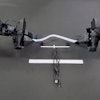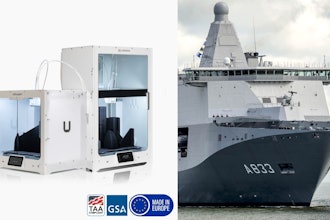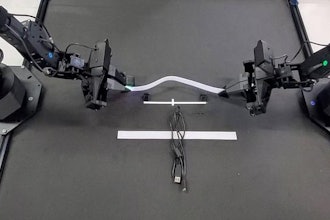
According to ABI Research, mission-critical use cases are driving private IoT connection growth in manufacturing. The report states that Industrial IoT (IIoT) customers are eager to digitalize critical use cases with high-powered, dedicated networks, making these industries leaders in private 4G and 5G adoption. Manufacturing is projected to have the most private cellular IoT connections in the future, with 108 connections by 2030.
“Mission-critical use cases require ultra-reliable connectivity," says Lizzie Stokes, IoT Networks & Services Analyst at ABI Research. “Any interruption in these operations could lead to significant revenue loss or threaten human life. Given these consequences, most mission-critical IIoT customers upgrading to wireless connectivity will choose a private cellular network."
Dominant mission-critical IIoT use cases include automating heavy machinery, replacing legacy networks and tracking containers in ports. Each of these use cases requires an ultra-reliable network. According to Stokes, “Heavy machinery automation, in particular, calls for the performance and low latency of a private 5G network. Industrial customers often initially invest in a private cellular network to connect employees' communication devices, such as smartphones or tablets, but eventually realize the value these networks can provide in more critical IoT applications.”
Private wireless vendors like Ericsson and Nokia have been focused on the needs of these industrial customers. However, despite their relevance, mission-critical IIoT applications account for only a portion of total IoT use cases. Most IoT use cases do not require ultra-low-latency networks and instead support disparate devices that send infrequent, low-payload communications. These non-mission critical IoT use cases are better suited for non-cellular private network technologies, like Wi-Fi, private LoRaWAN, or DECT-2020 NR.
Connected sensors in commercial buildings, hospitals, and hotels, for example, do not require a high-performing cellular network and are much more likely to benefit from a long-range and low-power option like private LoRaWAN. Wi-Fi's recent iterations, like Wi-Fi 6E and Wi-Fi HaLow, have made the technology more relevant to the non-mission-critical needs of large, complex campuses like universities and entertainment venues.
DECT-2020 NR, the first non-cellular 5G standard, can support large device densities, making the technology highly applicable in smart metering use cases. When considering non-mission-critical applications, the competitive landscape of the private wireless industry expands to include non-cellular technologies that might not receive as much industry attention as private cellular networks.
“The ideal private network connectivity technology for any IoT use case will largely depend on its criticality,” says Stokes. “However, all important IoT verticals—from healthcare to manufacturing—will experience healthy growth in private cellular IoT connections from 2025 to 2030, underscoring this relatively new technology's influence even in applications that heavily rely on non-cellular technologies.”
These findings are from ABI Research’s Use Cases for Private Wireless Networks in IoT application analysis report.





















